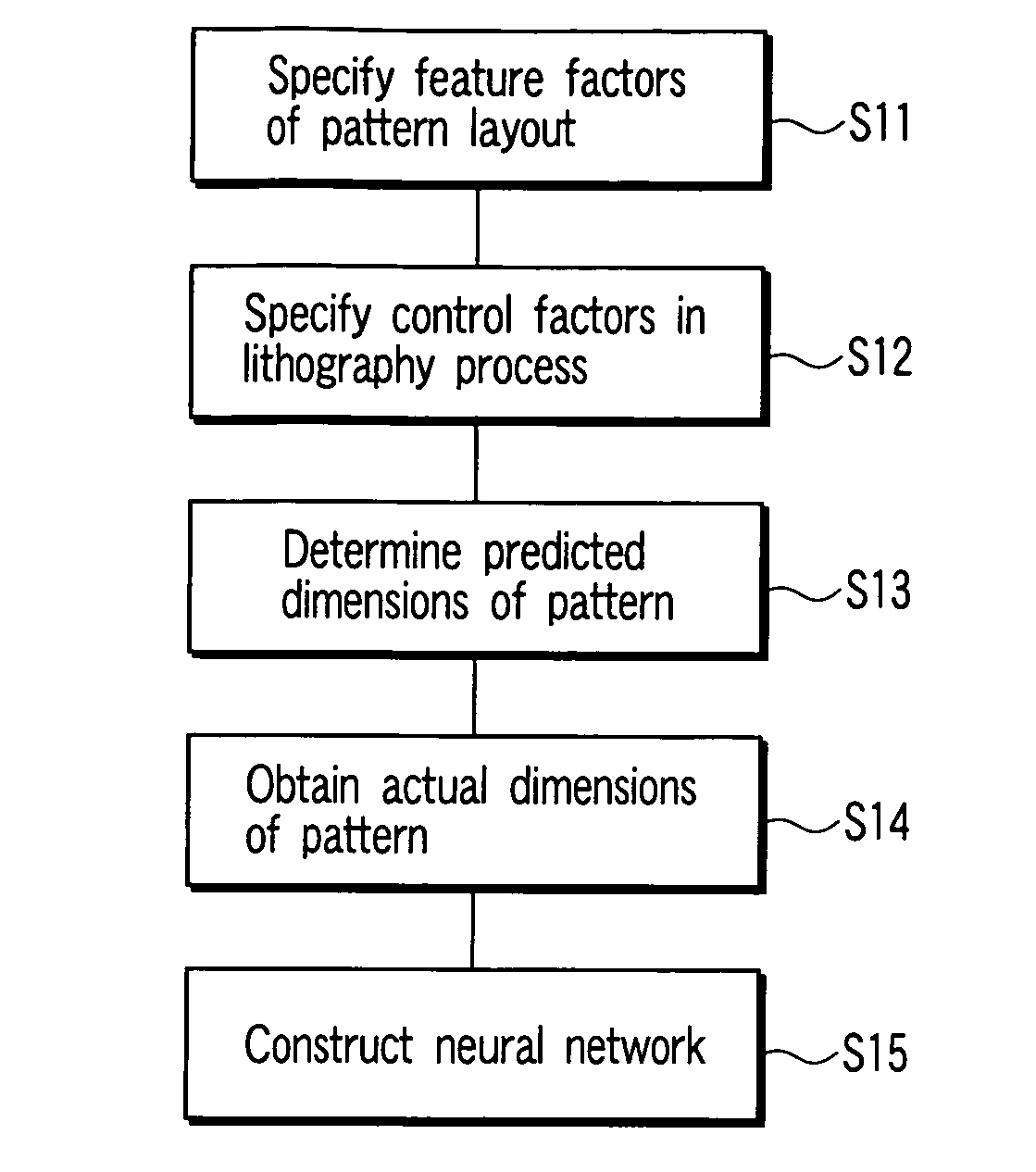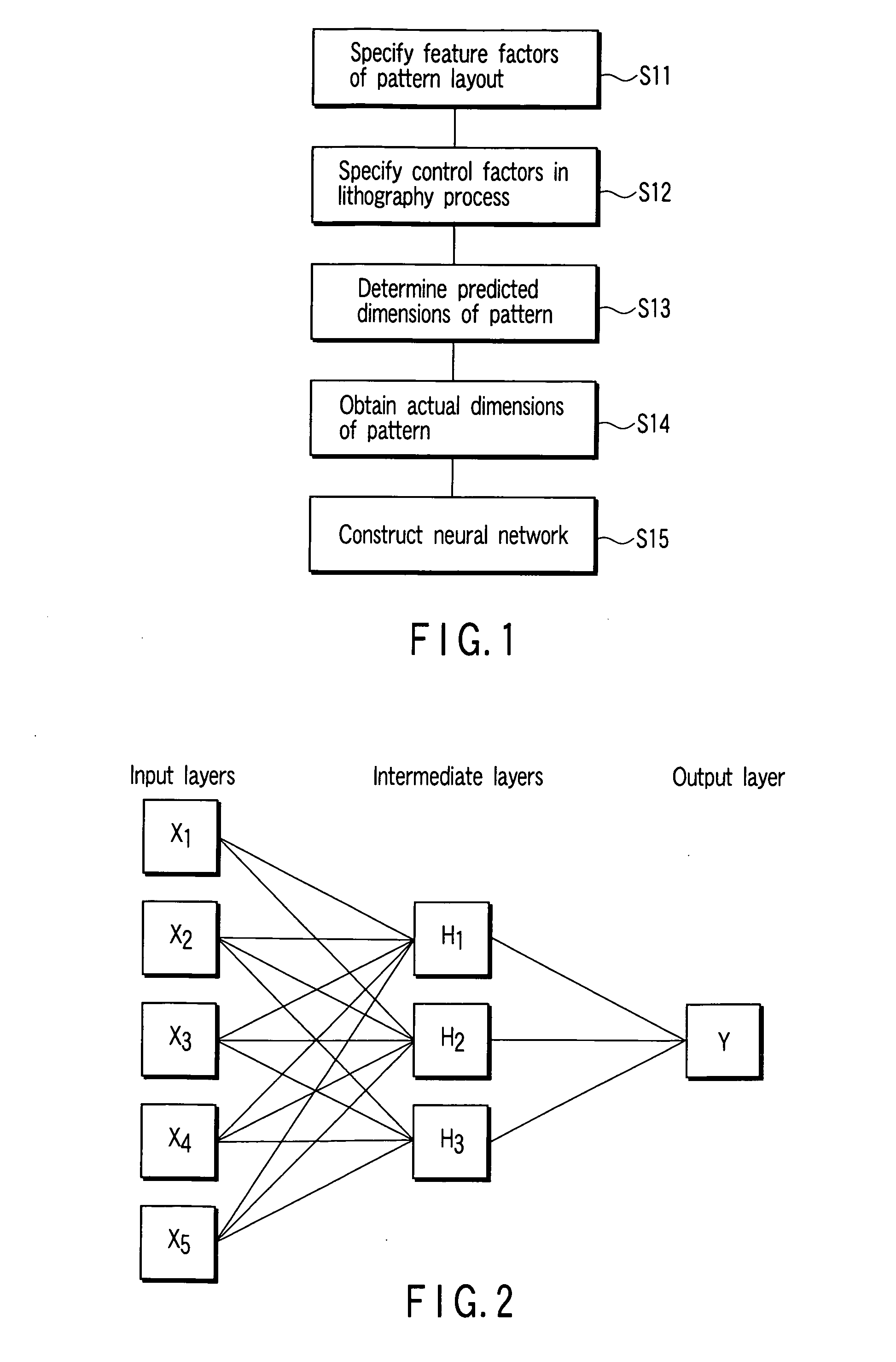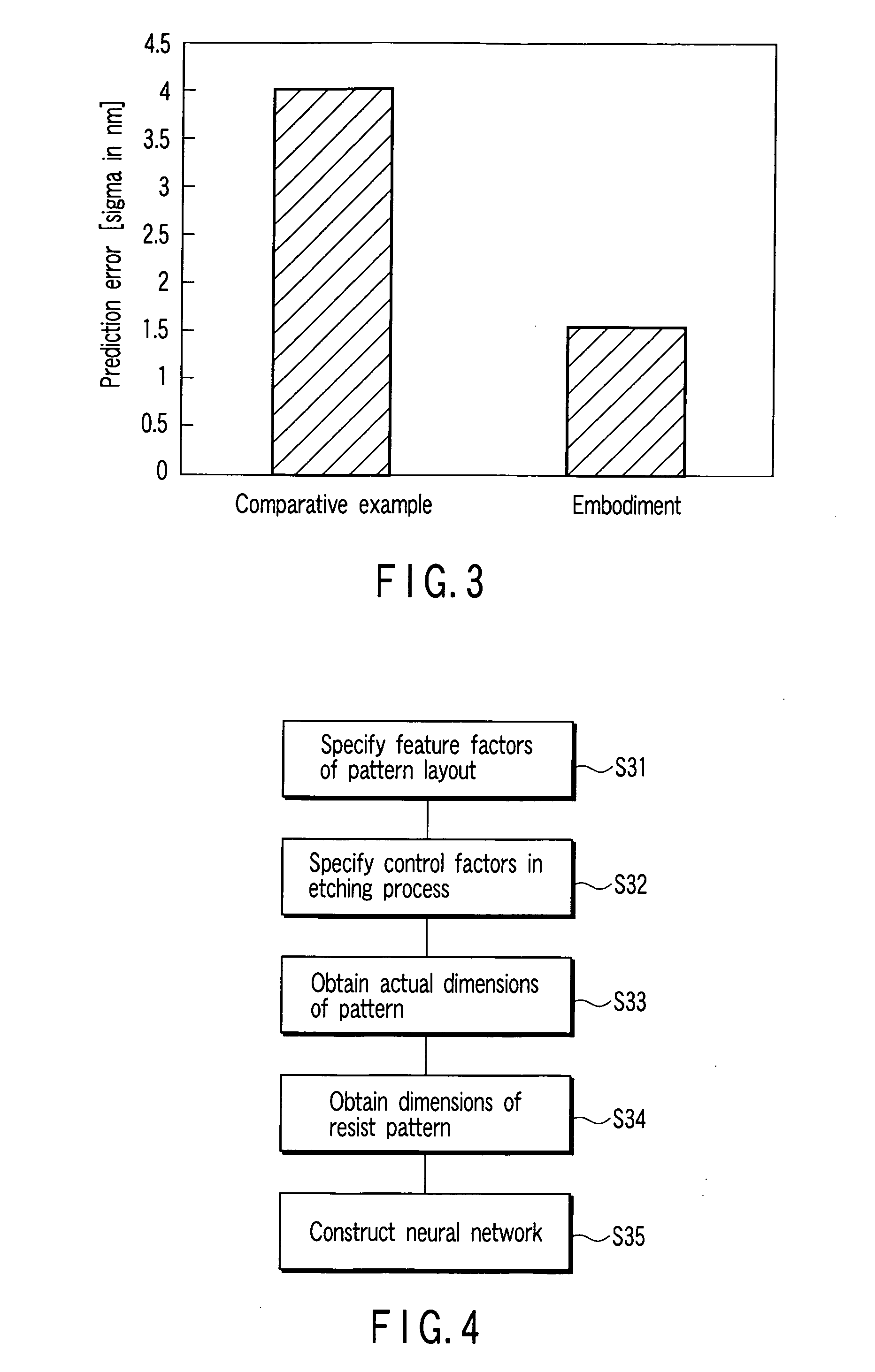Simulation model making method
a simulation model and modeling method technology, applied in the field of simulation model making, can solve the problems of increasing the difficulty of making a highly precise simulation model, the difficulty of precisely making a physical model that reflects the process effects of a photoresist or the like, and the difficulty of achieving the effect of reducing the difficulty of aging
- Summary
- Abstract
- Description
- Claims
- Application Information
AI Technical Summary
Problems solved by technology
Method used
Image
Examples
embodiment 1
[0020]FIG. 1 is a flowchart which schematically illustrates a method of making a simulation model according to a first embodiment.
[0021]In step S11, feature factors are specified which characterize the pattern layout of a mask pattern. That is to say, feature factors based on pattern layout information are set in a system (a computer or the like) for making a simulation model. The feature factors include target dimensions (pattern widths, space widths, etc.) of the pattern, pattern pitches, the rate of area taken up by the pattern (pattern area rate) within a given region, and the number of patterns within a given region.
[0022]In step S12, control factors are specified which affect the dimensions of the pattern to be formed on a substrate by means of a lithography process. That is, control factors that control the dimensions of the pattern to be formed on a substrate by means of a lithography process are set in the simulation model making system (computer or the like). The control f...
embodiment 2
[0035]FIG. 4 is a flowchart which schematically illustrates a method of making a simulation model according to a second embodiment.
[0036]In step S31, feature factors are specified which characterize the pattern layout of a mask pattern. That is to say, feature factors based on pattern layout information are set in a system (a computer or the like) for making a simulation model. The feature factors include target dimensions (pattern widths, space widths, etc.) of the pattern, pattern pitches, the rate of area taken up by the pattern (pattern area rate) within a given region, and the number of patterns within a given region.
[0037]In step S32, control factors are specified which affect the dimensions of the pattern to be formed on a substrate by means of an etching process. That is, control factors that control the dimensions of the pattern to be formed on a substrate by means of an etching process are set in the simulation model making system (computer or the like). Here, the etching ...
embodiment 3
[0045]FIG. 5 is a flowchart which schematically illustrates a method of making a simulation model according to a third embodiment.
[0046]In step S41, a plurality of types of mask patterns is prepared as test patterns used in lithography simulation. Specifically, the mask patterns include line and space patterns, isolated patterns, and island patterns.
[0047]In step S42, the actual dimensions of a resist pattern are obtained which is actually formed on a substrate through a lithography process using a mask pattern. Specifically, the mask pattern is transferred to a photoresist on a semiconductor substrate by means of an exposure apparatus and a development process is then carried out to form the resist pattern. The dimensions of the resist pattern thus actually formed are measured with a scanning electron microscope (SEM). The measured dimensions are entered into a system (a computer or the like) for making a simulation model, and are obtained by the system.
[0048]In step S43, physical ...
PUM
| Property | Measurement | Unit |
|---|---|---|
| dimension | aaaaa | aaaaa |
| temperature | aaaaa | aaaaa |
| pressure | aaaaa | aaaaa |
Abstract
Description
Claims
Application Information
 Login to View More
Login to View More - R&D
- Intellectual Property
- Life Sciences
- Materials
- Tech Scout
- Unparalleled Data Quality
- Higher Quality Content
- 60% Fewer Hallucinations
Browse by: Latest US Patents, China's latest patents, Technical Efficacy Thesaurus, Application Domain, Technology Topic, Popular Technical Reports.
© 2025 PatSnap. All rights reserved.Legal|Privacy policy|Modern Slavery Act Transparency Statement|Sitemap|About US| Contact US: help@patsnap.com



